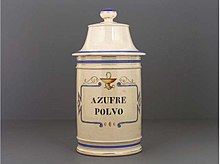SULFUR
· Atomic Weight: 32.064
· Period:3

· Melting Point: 388.36 K (115.21°C or 239.38°F)
· Boiling Point: 717.75 K (444.60°C or 832.28°F)
What is Sulfur
· Sulfur is a non-metal and element that is odorless and tasteless,
· Sulfur is a non-metal and element that is odorless and tasteless,
Properties
· The element is bright
yellow in color, soft, and abundant
· sulfur is a solid with only
a faint odor, similar to that of matches.
· It is insoluble in water,
but soluble in carbon sulfide. It burns with a blue flame, oxidizing to
sulfur dioxide.
· Sulfur deposits are found
naturally in areas around hot springs and in volcanic regions.
· It is also widely found in
nature as iron pyrites (iron sulfide), galena (lead sulfide), gypsum (calcium
sulfate), Epsom salts (magnesium sulfate) and many other minerals.
· Sulfur makes up only 0.05%
of the Earth's crust, but it is easy to get.
· However, miners do not have
to go underground to get it. They make the sulfur come to them by a clever
arrangement of three pipes within pipes.
Uses
· Sulfur's main commercial
use is as a reactant in the production of sulfuric acid
· Sulfur is a vital element
for all forms of life. It is a component of two amino acids, cysteine and methinks.
· Elemental sulfur is used in
black gunpowder, matches, and fireworks; in the vulcanization of rubber.
The Importance of Sulfur
According to the Plant and Soil Sciences e Library, sulfur, one of the most important elements in nature, plays a crucial role in the existence of all living organisms. Sulfur is a key component of certain proteins that make life possible. It is also one of the most abundant elements in the universe.
 Sulfur forms over 30 solid allot ropes, more than any other element. Besides S8, several other rings are known.[14] Removing one atom from the crown gives S7, which is more deeply yellow than S8. HP analysis of "elemental sulfur" reveals an equilibrium mixture of mainly S8, but with S7 and small amounts of S6.[15] Larger rings have been prepared, including S12 and S18.
Sulfur forms over 30 solid allot ropes, more than any other element. Besides S8, several other rings are known.[14] Removing one atom from the crown gives S7, which is more deeply yellow than S8. HP analysis of "elemental sulfur" reveals an equilibrium mixture of mainly S8, but with S7 and small amounts of S6.[15] Larger rings have been prepared, including S12 and S18.
Amorphous or "plastic" sulfur is produced by rapid cooling of molten sulfur—for example, by pouring it into cold water. X-ray crystallography studies show that the amorphous form may have a helical structure with eight atoms per turn. The long coiled polymeric molecules make the brownish substance elastic, and in bulk this form has the feel of crude rubber.
History
Being abundantly available in native form, sulfur was known in ancient times and is referred to in the Torah (Genesis). English translations of the Bible commonly referred to burning sulfur as "brimstone", giving rise to the term "fire-and-brimstone"sermons, in which listeners are reminded of the fate of eternal damnation that await the unbelieving and unrepentant. It is from this part of the Bible that Hell is implied to "smell of sulfur" (likely due to its association with volcanic activity).
References
https://en.wikipedia.org/wiki/Sulfur
The Importance of Sulfur
According to the Plant and Soil Sciences e Library, sulfur, one of the most important elements in nature, plays a crucial role in the existence of all living organisms. Sulfur is a key component of certain proteins that make life possible. It is also one of the most abundant elements in the universe.
Allot ropes
 Sulfur forms over 30 solid allot ropes, more than any other element. Besides S8, several other rings are known.[14] Removing one atom from the crown gives S7, which is more deeply yellow than S8. HP analysis of "elemental sulfur" reveals an equilibrium mixture of mainly S8, but with S7 and small amounts of S6.[15] Larger rings have been prepared, including S12 and S18.
Sulfur forms over 30 solid allot ropes, more than any other element. Besides S8, several other rings are known.[14] Removing one atom from the crown gives S7, which is more deeply yellow than S8. HP analysis of "elemental sulfur" reveals an equilibrium mixture of mainly S8, but with S7 and small amounts of S6.[15] Larger rings have been prepared, including S12 and S18.Amorphous or "plastic" sulfur is produced by rapid cooling of molten sulfur—for example, by pouring it into cold water. X-ray crystallography studies show that the amorphous form may have a helical structure with eight atoms per turn. The long coiled polymeric molecules make the brownish substance elastic, and in bulk this form has the feel of crude rubber.
History
Being abundantly available in native form, sulfur was known in ancient times and is referred to in the Torah (Genesis). English translations of the Bible commonly referred to burning sulfur as "brimstone", giving rise to the term "fire-and-brimstone"sermons, in which listeners are reminded of the fate of eternal damnation that await the unbelieving and unrepentant. It is from this part of the Bible that Hell is implied to "smell of sulfur" (likely due to its association with volcanic activity).
References
https://en.wikipedia.org/wiki/Sulfur

